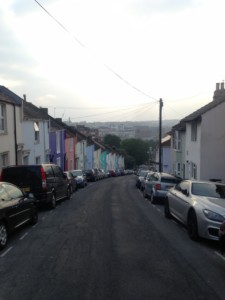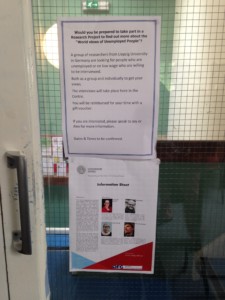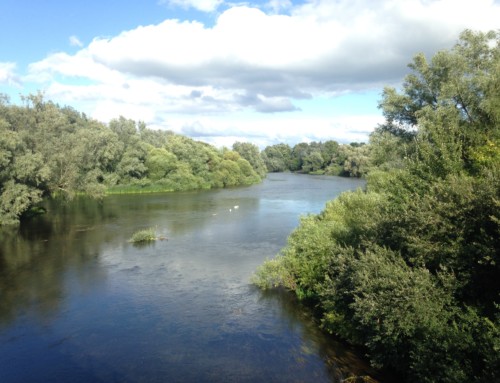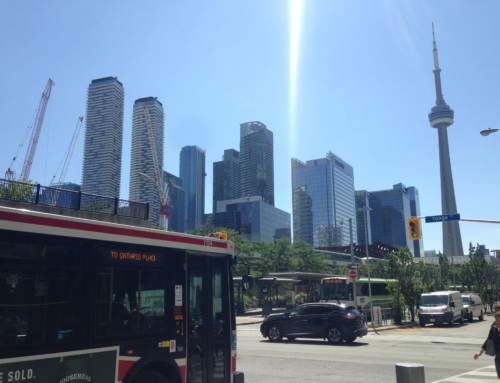Apart from a few conferences that we attended in the summer of 2018, we collected more data during two fieldtrips. Firstly, we travelled to a city near the coast in South England (S-Town). Secondly, we visited a town in the west of Ireland (W-Town). In this entry, we would like to share our impressions of South England.
Arrival: rich and poor side by side
The sunrays are breaking in the tent-like construction under which the platforms of the railway lie. They form a checked pattern on the ground that leads us to the neo-Renaissance entrance hall. The pivotal colour is blue, it shines everywhere. Well, ‘shine’ might be the wrong verb, because the ravages of time, as well as the salty wind that travels from the sea into the streets, take their toll on the building. As we will see in the following minutes, hours and days, it is not only the railway station but the entire city that is affected by the coastal weather. It’s June and this fieldtrip will take place at the southern coast of England.
The city is bouncing, especially the centre where people gather from early morning to the late night hours. Small, cosy lanes are home to numerous shops, cafés and pubs, while the boulevards hold the bigger malls and well-known stores. People saunter at the promenade to enjoy the sun which lightens up the white facades of the Victorian houses. If you look closely enough, you can see how the paint crumbles away, how the plaster flutters like snow. This seems like a metaphor for the state of the city. Many people here live under uncertain conditions within a very small space. There’s no way of overlooking their situation. Both, on the way to the railway station, and next to the sightseeing spots in the city centre, homeless people and people who appear to be drug addicts are a normal sight to see. Right at the beginning this view testifies to the aim of our fieldtrip: to discover the life worlds, the worldviews and, last but not least, the support systems of people in need.


First stop: a meeting centre for families, singles and the homeless
Our first stop is a support centre downtown which claims to be open for all kinds of people. And indeed, this is true. Founded in the 1980s, this officially acknowledged centre is based on an open door policy. In contrast to other institutions, it doesn’t take the names of incoming people. That means that we are not really recognized as researchers at our first visit. Because we are not examined at all, we don’t get the feeling of being external outsiders. These circumstances make our first conversation with two of the workers very pleasant. While we are surrounded by quite a number of people of different ages who are sitting around, talking or using the opportunity of getting a cheap meal, two women welcome us and give us some basic information about the centre. A cheap vegan meal is just one of the many support services that are provided by the centre. There are several different courses during the week in which visitors can get legal advice, learn about basic health care and participate in creative and artistic activities. Child Care is provided, as is Social Aid Consultation and a much-frequented IT room. The support centre also offers the opportunity of volunteering as well as an appropriate certificate in order to increase job opportunities. The two workers not only provide us with an initial insight, but they also help us find potential interview partners and offer us premises for us to use in the days to come. All in all, we are engaged in one group discussion, ten interviews and numerous protocols which make promising additions to our field research. The fact that the interviewees speak openly most of the time is a result of the feeling of solidarity which characterises this centre.
Second stop: a food distribution centre
Our second stop brings us to the edge of town–in the upper part of the famous double-decker buses. A UK-wide operating organization is housed in a small commercial and industrial complex. This organization collects food supplied by supermarkets and companies that are either close to the expiration date or are sorted out for other reasons. The food is distributed among various social institutions (like the one visited on the previous day) where they are handed out to the needy. This project also offers a contact point for people who want to do voluntary work or have to do community service. But above all, it is a way to work as volunteers for people in precarious conditions and thus achieve a fixed routine within the daily life. It is also an opportunity to return received aid and to get a certificate – as a fork-lift driver. Last but not least, a huge refrigerator in the warehouse, intended for the food, shows that the staff also help themselves out with food supplies they cannot pass on anymore. The entire area, including the administration building, is shown to us during a brief tour. Again, the employee with whom we were in contact in advance, is very friendly and responsive to our concerns and research interests. In the end, we return with four interviews which provide us with numerous insights into the living conditions and the background of the participants.
Text: Alexander Mennicke
Translation: Charlotte Nate



Leave A Comment